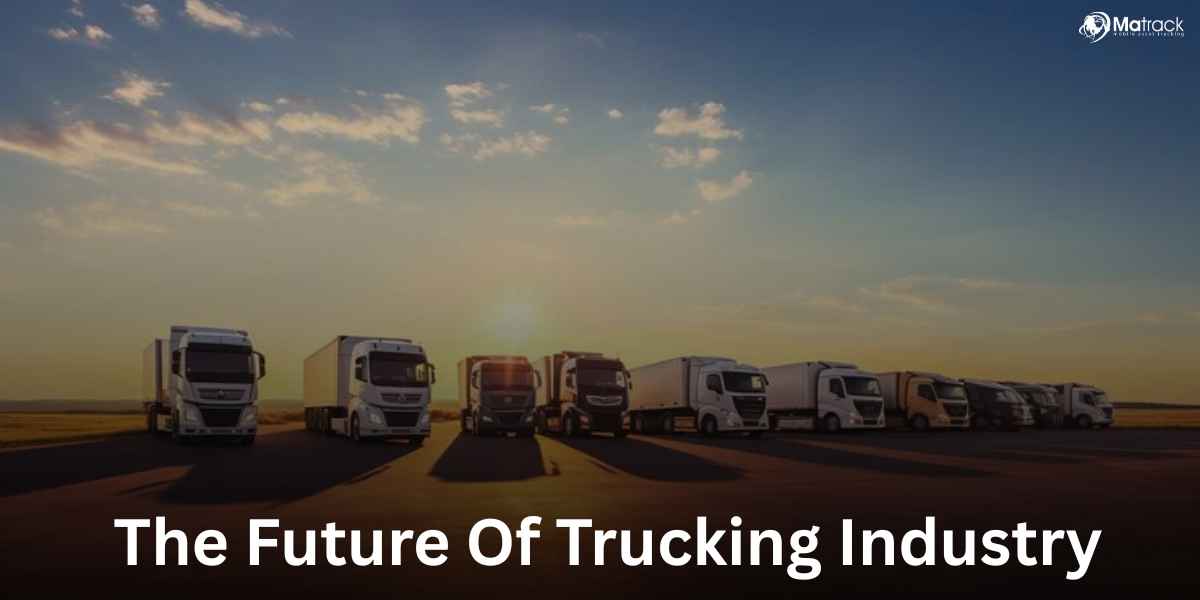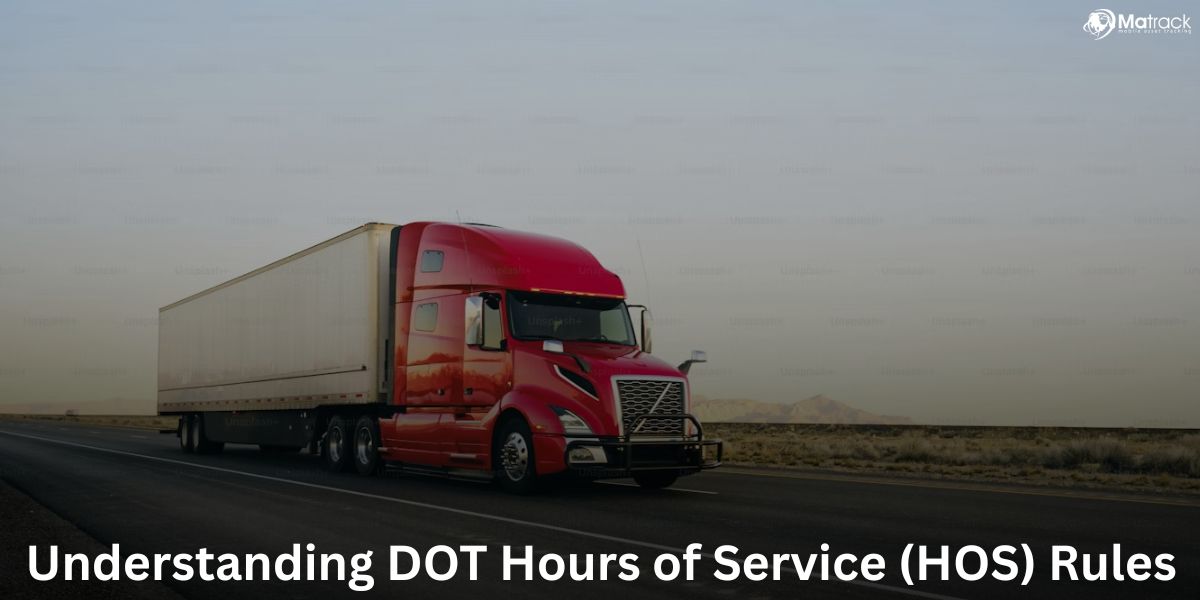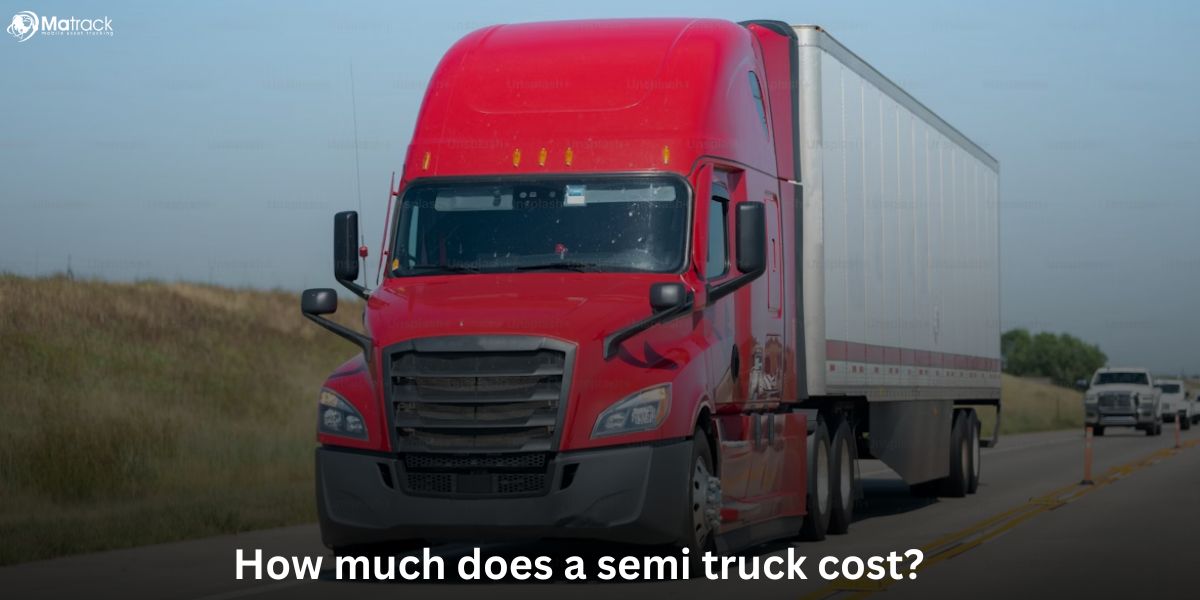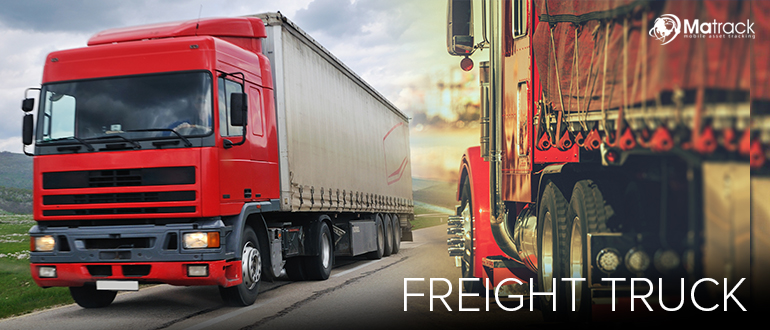Key Takeaways:
- The trucking industry in 2025 exceeds $950 billion in the U.S. and handles over 73% of domestic freight, underscoring its essential role in logistics.
- Future trends include autonomous trucks, the adoption of electric vehicles, digital freight platforms, and the integration of smart infrastructure to improve fleet efficiency.
- Major challenges such as driver shortages, rising operational costs, regulatory compliance, and supply chain disruptions continue to impact industry performance.
- Matrack Telematics enhances real-time fleet visibility, reduces fuel waste, and supports compliance with automated monitoring tools.
Trucking Industry Market Size
The trucking industry market size in 2025 surpasses $950 billion in the U.S., making it the largest freight transportation segment. This valuation includes revenues from for-hire carriers, private fleets, and independent owner-operators moving goods across all 50 states.
Trucking handles over 73% of all domestic freight tonnage, highlighting its essential role in national logistics. As retail, manufacturing, and agricultural sectors depend on efficient delivery, the sector’s economic impact extends deep into the national supply chain.
Globally, the trucking industry generates over $4 trillion in revenue, with North America contributing more than 22% of total output. This global scale reflects rising cross-border demand, e-commerce growth, and increased infrastructure investments across developed and emerging markets.
Why Is It Important To Understand The Future Of Trucking?
Understanding the future of trucking is important because it shapes economic performance, operational strategy, and industry transformation.
Clear insight into trucking trends enables businesses to adapt quickly, remain competitive, and meet evolving transportation needs.
- Supports Supply Chain Continuity: Understanding upcoming changes in trucking helps manufacturers and retailers prevent inventory shortages and delivery delays.
- Enables Workforce Planning: Forecasting industry demands allows logistics firms to recruit effectively, reduce turnover, and train drivers for future roles.
- Guides Investment Decisions: Businesses can allocate resources efficiently by knowing which technologies, vehicles, and tools will offer long-term benefits.
- Prepares for Regulatory Compliance: Anticipating safety, emissions, and data policies helps fleets meet legal standards and avoid penalties.
- Drives Sustainable Transition: Clarity on green trucking trends enables early adoption of electric vehicles and alternative fuels.
- Enhances Competitive Advantage: Companies aligned with future logistics models improve delivery speed, lower costs, and boost service reliability.
Top Future Tends Of Trucking Industry In 2025
Autonomous Truck Deployment
Autonomous trucks are becoming a visible part of long-haul operations in 2025, especially along high-volume corridors like Dallas to Houston. With Level 4 automation in place, these trucks handle stretches of highway driving without human intervention.
The use of advanced sensors, machine learning, and real-time mapping ensures safe navigation in controlled environments. Fleet operators are focusing on predictable lanes where traffic conditions and terrain are stable.
Electric Vehicle Integration
Electric trucks are now active in urban fleets, where short-haul delivery and depot-based charging make them practical. Brands like Volvo, Freightliner, and Tesla have already delivered thousands of electric units to companies aiming to reduce emissions.
The biggest advantage for urban freight is fuel savings and compliance with tightening city emissions laws. While long-haul EV expansion is limited, regional routes are showing consistent growth.
Digital Freight Platforms
Freight matching platforms are reshaping dispatch in 2025 by using artificial intelligence to optimize load assignments. Carriers are reducing wasted miles and boosting load efficiency through tools that respond in real time.
For independent drivers and small fleets, these platforms cut the time spent on negotiation and paperwork. Fast, accurate route planning is now a standard operational feature.
Cybersecurity Enforcement
Fleet cybersecurity is no longer optional in 2025. With trucks now running on connected systems, fleets are applying strict digital protections to avoid disruptions and financial loss.
The NMFTA’s 2025 guidelines have become a baseline standard for large and mid-sized carriers. From encrypted GPS fleet tracking to driver identity verification, companies are securing every digital touchpoint.
Sustainability Regulations
New emissions laws in 2025 are pressuring carriers to adopt cleaner engines and switch to low-emission fuels. Federal incentives are accelerating the retirement of older diesel units.
Carriers are now required to track CO₂ output and submit data to environmental regulators. This shift is driving more investment into electric and hybrid models across national fleets.
Driver Shortage Solutions
The shortage of qualified drivers remains a critical issue in 2025, but companies are making strategic adjustments. Fleets are improving compensation models and offering flexible work schedules to attract and retain talent.
Training programs now include digital tools and onboarding apps that make it easier for new drivers to get started. Carriers are building loyalty through safety bonuses and guaranteed routes.
Smart Infrastructure Integration
Highway infrastructure is evolving to match the technology inside modern trucks. Smart traffic systems, weigh-in-motion sensors, and electronic tolling are improving the speed and safety of freight travel.
Cities and logistics hubs are embedding real-time traffic data into planning tools. These upgrades allow carriers to avoid bottlenecks and improve delivery accuracy across regions.
What Are The Challenges In The Trucking Industry?
Driver Shortage
The trucking industry continues to face a severe shortage of qualified drivers in 2025. Aging workers are retiring faster than new drivers are entering, making it difficult for fleets to meet freight demand.
Rising Operating Costs
Operating costs have risen sharply due to higher fuel prices, insurance premiums, and equipment maintenance. These increases put pressure on profit margins, especially for small and mid-sized carriers.
Regulatory Compliance
New emissions standards and safety regulations require fleets to invest in cleaner engines and better monitoring systems. Compliance adds financial and logistical strain, particularly for carriers without modernization plans.
Infrastructure Limitations
Congested highways and limited parking options slow down delivery schedules and raise fuel consumption. Outdated infrastructure in many regions adds time and cost to every route.
Technology Integration
Carriers struggle to adopt new technologies due to high upfront costs and system compatibility issues. Without proper training and infrastructure, many fleets cannot unlock the full benefits of automation and analytics.
Supply Chain Disruptions
Unpredictable global trade patterns and port delays disrupt shipment schedules. Trucking companies often lack the flexibility or tools to adjust routes in real time.
Environmental Pressures
Sustainability expectations are rising, and shippers demand low-emission transport options. Meeting these demands requires costly investments in electric or alternative fuel vehicles.
Use Matrack Telematics Systems To Manage Fleet Trucks
Using Matrack Telematics systems helps fleet managers gain real-time visibility into every truck’s location, speed, and route. This insight allows companies to respond quickly to delays, reroute vehicles efficiently, and maintain delivery schedules.
Matrack systems offer tools for monitoring fuel usage, engine performance, and driver behavior. These features help reduce operating costs by identifying inefficient driving patterns and minimizing fuel waste.
Fleet compliance also becomes easier with Matrack’s automated reports for hours-of-service, maintenance alerts, and inspection records. This ensures companies stay aligned with regulatory standards while avoiding penalties and downtime.



